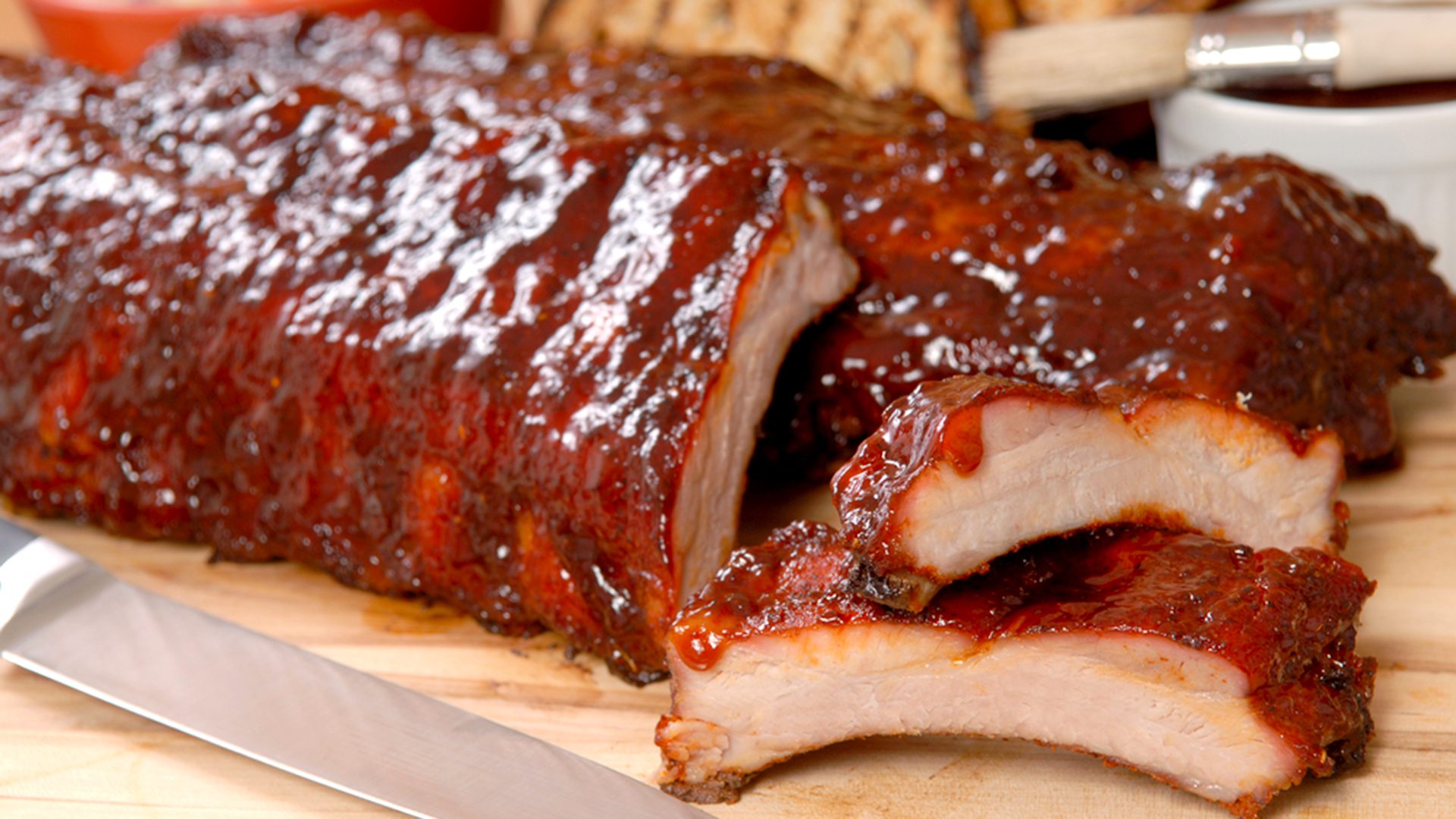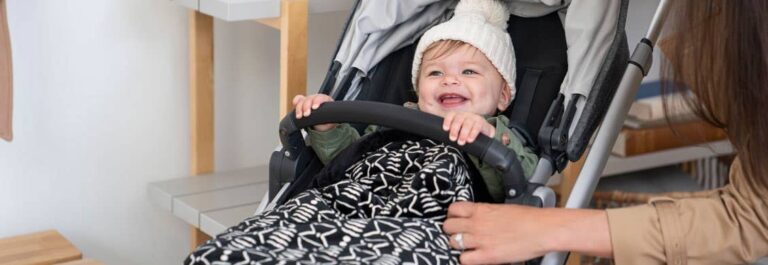How to Get Baby Out of Ribs: Expert Tips
To get baby out of ribs, try changing your position, such as bouncing on an exercise ball or doing pelvic tilts. You can also try stretching your arms above your head or adjusting your posture to lengthen your back.
Additionally, adopting a knee-to-chest position and applying gentle pressure just below your ribs may encourage your baby to move. Massage can also help relax the muscles under strain in your ribs. Overall, these simple tips can relieve discomfort and help your baby move from an uncomfortable position in your ribs.
Understanding Baby’s Position In The Ribs
If your baby is causing discomfort in your ribs, try changing positions by bouncing on an exercise ball or doing pelvic tilts. Additionally, stretching your arms above your head or adjusting your posture may help relieve rib pain.
The Impact Of Your Baby’s Position On Rib Discomfort
Understanding your baby’s position in the ribs is crucial when it comes to alleviating rib discomfort during pregnancy. The position of your baby can directly impact the amount of pressure they exert on your ribs, leading to discomfort and even pain. It’s essential to be aware of your baby’s positioning to effectively manage your discomfort and find relief.
Determining If Your Baby Is Stuck In The Ribs
Wondering if your baby is stuck in your ribs? There are a few telltale signs that can help you identify if your baby’s positioning is causing your discomfort. Keep an eye out for sensations such as the baby’s head moving under your rib cage or a hard knot under your ribs. These signs can indicate that your baby is indeed lodged in your rib area, causing you discomfort.
Identifying Signs Of A Breech Baby Position
One specific position that can cause rib discomfort is a breech baby position. A breech baby refers to a situation where your baby’s bottom or feet are positioned to come out first instead of their head. If you suspect your baby might be in a breech position, pay attention to signs such as feeling consistent kicks or movements in your rib area, or a sense of pressure or tightness in that region. These signs can help you confirm if your baby is in a breech position, allowing you to take appropriate measures to address the discomfort.
In conclusion, understanding your baby’s position in the ribs is crucial for managing rib discomfort during pregnancy. By recognizing the impact of your baby’s position and identifying signs of a stuck or breech baby, you can take steps to alleviate discomfort and ensure a more comfortable pregnancy experience.

Credit: supermancooks.com
Relieving Rib Pain And Discomfort
During pregnancy, it’s not uncommon for your baby to find a cozy spot nestled in your rib cage. While this can be a beautiful bonding experience, it can also lead to discomfort and even pain. Luckily, there are several techniques you can try to encourage your baby to move out of your ribs and find a more comfortable position. In this section, we’ll explore some effective methods to relieve rib pain and discomfort.
Changing Positions To Encourage Your Baby To Move
One simple yet effective technique to relieve rib pain is to change positions. By changing your position, you create a shift in your baby’s surroundings, encouraging them to find a new spot. One position you can try is bouncing on an exercise ball. The gentle motion can help your baby shift their position and alleviate the pressure on your ribs. Additionally, doing a few pelvic tilts can provide relief by adjusting the position of your pelvis, giving your baby more space to move.
Trying Light Exercises To Encourage Movement
Engaging in light exercises can also encourage your baby to move from an uncomfortable position. One exercise you can try is getting on all fours, with your hands parallel to your shoulders and your knees parallel to your hips. This position helps create a gentle sway in your pelvis, which might entice your baby to shift. Remember to listen to your body and not exert yourself too much, as strenuous exercises are not recommended during pregnancy.
Utilizing Poses And Positions To Encourage Movement
In addition to exercises, certain poses and positions can also help stimulate your baby to move. One popular pose is the knee-to-chest position. Start off on all fours and then gently bring your knees towards your chest. This position can create a subtle change in your baby’s environment, encouraging them to reposition themselves. Applying gentle pressure just below your ribs is another technique you can try, as it may directly stimulate your baby to move.
Using Gentle Pokes And Prods To Encourage Movement
If changing positions and exercises don’t seem to do the trick, you can gently try poking or prodding your baby’s area to encourage movement. Use your fingertips to apply slight pressure around your baby’s body, avoiding any discomfort. These gentle pokes and prods can help initiate a response from your baby, prompting them to shift or change their position.
The Role Of Talking And Singing In Stimulating Movement
Your voice can have a profound impact on your baby even before they are born. Talking and singing to your baby can help stimulate movement as they respond to the familiar sounds and vibrations. Try having conversations with your baby, read books aloud, or play soothing music. These interactions can create a positive and engaging environment within your womb, encouraging your baby to move and find a more comfortable position.
Relieving rib pain and discomfort during pregnancy is essential for your overall comfort and well-being. By implementing these techniques, you can create a welcoming space for your baby to move and find a more comfortable position. Experiment with different methods and listen to your body to find what works best for you. Remember, always consult with your healthcare provider before trying any new techniques or exercises during pregnancy.
Managing Rib Pain Throughout Pregnancy
To manage rib pain throughout pregnancy and get the baby out of the ribs, try changing positions such as bouncing on an exercise ball or doing pelvic tilts. You can also try stretching your arms above your head or adjusting your posture to relieve rib pain and create more room for the baby.
Tips For Dealing With Ongoing Rib Pain
Dealing with ongoing rib pain during pregnancy can be challenging, but there are some tips that can help alleviate the discomfort. Here are a few suggestions:
- Try changing your position: If your baby is causing pain in your ribs, changing your position might help. Bouncing on an exercise ball or doing a few pelvic tilts can help shift your baby’s position and relieve pressure on your ribs.
- Stretch your arms above your head: Some pregnant women find that stretching their arms above their heads helps relieve rib pain. Lengthening your back can give your baby more room, reducing the chances of their kicks landing directly on your ribs.
- Adjust your posture: Another way to find relief is by adjusting your posture to lengthen your back. This can be done by sitting straight, keeping your shoulders relaxed, and avoiding slouching.
Stretching Techniques For Relief
Stretching can provide much-needed relief from rib pain during pregnancy. Try incorporating the following stretching exercises into your daily routine:
- Side bending: Stand with your feet hip-width apart and gently bend to the side, reaching one arm over your head. Hold the stretch for a few seconds, then switch sides.
- Child’s pose: Get down on all fours, then sit back on your heels while reaching your hands forward. Allow your forehead to rest on the floor and hold the position for a few deep breaths.
- Seated twisting: Sit on a chair or exercise ball and keep your feet flat on the ground. Twist to one side, placing one hand on the opposite knee for support. Hold the stretch, then repeat on the other side.
Adjusting Posture For Pain Relief
Proper posture plays a crucial role in managing rib pain during pregnancy. Here are a few adjustments you can make to find relief:
- Sit up straight: Avoid slouching and sit with your back straight. Consider using a lumbar support pillow if necessary.
- Use a pregnancy pillow: Investing in a pregnancy pillow can help support your growing belly and relieve pressure on your ribs while sleeping.
- Avoid high heels: Opt for comfortable, supportive shoes that promote good posture and reduce strain on your back and ribs.
Exploring Alternative Therapies For Rib Pain Relief
In addition to the above tips, there are alternative therapies that may provide relief from rib pain during pregnancy. However, it’s important to consult with your healthcare provider before trying any new treatments. Here are a few options to consider:
- Acupuncture: This traditional Chinese therapy involves the insertion of tiny needles at specific points on your body. It has been known to alleviate pain and promote relaxation.
- Chiropractic care: A chiropractor can help align your spine and pelvis, reducing the strain on your ribs and offering relief.
- Prenatal massage: A prenatal massage therapist knows how to target and relieve areas of discomfort during pregnancy, including rib pain.
Remember, each woman’s experience with rib pain during pregnancy is unique, and what works for one may not work for another. It’s important to listen to your body, try different techniques, and consult with your healthcare provider for personalized advice and guidance.
Understanding And Monitoring Baby’s Movements
One of the most exciting and reassuring aspects of pregnancy is feeling your baby’s movements. As your little one grows and develops inside the womb, their movements serve as an indication of their well-being. Understanding and monitoring your baby’s movements is crucial for ensuring a healthy pregnancy. In this section, we will explore the significance of baby’s movements during pregnancy, provide week-by-week insights into baby’s movements, discuss how to recognize normal movement patterns, and emphasize the importance of seeking medical advice if abnormal movements are noticed.
The Significance Of Baby’s Movements During Pregnancy
Movement is a positive sign that your baby is thriving and active in the womb. It indicates that your baby’s central nervous system is developing, and they are engaging their muscles and joints. These movements also help your baby strengthen their bones, enhance their lung development, and prepare them for life outside the womb.
Additionally, monitoring your baby’s movements enables you to establish a connection between you and your little one even before their arrival. Feeling those gentle kicks, rolls, and hiccups can be an emotional and bonding experience for expecting parents.
Week-by-week Insights Into Baby’s Movements
Baby’s movements evolve and become more noticeable as your pregnancy progresses. Here’s a breakdown of what you can expect:
| Week | Movements |
|---|---|
| 9-13 weeks | Fluttering movements that may resemble gas bubbles |
| 13-16 weeks | Quickening, where you can feel slight twitches or flutters |
| 17-26 weeks | Regular, distinctive movements that may become more vigorous |
| 27-32 weeks | Increased activity, including kicks, stretches, and rolls |
| 33-40 weeks | Larger, stronger movements as your baby grows bigger |
Recognizing Normal Movement Patterns
While every baby’s movement patterns may slightly differ, it is important to establish what is normal for your own baby. Generally, the frequency and intensity of your baby’s movements tend to increase until around 32 weeks, after which there may be a shift in their pattern. However, it is important to note that variations in movement are normal throughout pregnancy.
A normal movement pattern includes periods of activity and periods of rest. Pay attention to your baby’s regular routine, and if you notice any significant changes or a sudden decrease in movements, it is essential to seek medical advice.
Seeking Medical Advice Regarding Abnormal Movements
If you become concerned about your baby’s movements or notice any abnormal patterns, do not hesitate to reach out to your healthcare provider. They can provide expert guidance and reassurance. Abnormal movements can include a significant decrease in movement, no movement for more than a few hours, or sudden, intense movements that are unusual for your baby. Trust your instincts and prioritize your baby’s well-being by seeking medical advice promptly.
Remember, understanding and monitoring your baby’s movements is a vital part of your prenatal care. Paying attention to these movements not only ensures your baby’s health but also strengthens the bond between you and your little one. Cherish these special moments and seek professional help when necessary to ensure a smooth and joyful pregnancy journey.
Expert Advice For Dealing With Kicking In The Ribs
When you’re pregnant, feeling your baby’s kicks and movements is a beautiful reminder of the new life growing inside you. However, as your baby gets bigger, those kicks can sometimes become uncomfortable, especially when they land in your ribs. If you’re experiencing rib pain due to your baby’s kicking, you’ll be glad to know that there are strategies and techniques you can try to alleviate the discomfort. In this article, we’ll provide expert advice on dealing with kicking in the ribs and share some effective techniques to help you find relief.
Strategies To Help Alleviate Discomfort From Baby’s Kicks
If your baby’s kicks are causing discomfort in your ribs, there are several strategies you can try to find relief. Here are some tips:
- Stretching Techniques for Relief: Stretching can be an effective way to relieve tension in your ribcage and create more space for your baby to move. Try raising your arms above your head or extending them to the sides, which can help lengthen your back and provide relief from rib pain.
- Adjusting Posture to Minimize Rib Pain: Your posture plays a crucial role in managing rib pain caused by your baby’s kicks. Sit or stand up straight, making sure to avoid slouching. You can also adjust your posture by supporting your lower back with a cushion or pillow, which can help alleviate the pressure on your ribs.
- Engaging in Circular Hip Movements to Soothe Discomfort: Moving your hips in a circular motion can help ease rib pain by gently shifting your baby’s position. Stand up and slowly rotate your hips in a circular motion, making sure to keep the movements gentle and controlled. This can provide temporary relief and give your baby some room to move away from your ribs.
Additional Tips And Recommendations For Managing Rib Pain During Kicking Episodes
In addition to the strategies mentioned above, here are some additional tips and recommendations to help you manage rib pain when your baby is kicking:
- Apply a warm compress to your ribs to help relax the muscles and reduce discomfort.
- Practice deep breathing exercises to promote relaxation and reduce muscle tension.
- Wear loose-fitting clothing that doesn’t put pressure on your ribs.
- Use a pregnancy support belt or band to provide additional support to your abdomen and alleviate rib pain.
- Consider prenatal yoga or gentle prenatal exercises that can help improve flexibility, circulation, and overall comfort during pregnancy.
By incorporating these strategies and techniques into your daily routine, you can find relief from rib pain caused by your baby’s kicking. Remember, it’s essential to listen to your body and communicate any concerns or persistent pain to your healthcare provider for further guidance.
Frequently Asked Questions For How To Get Baby Out Of Ribs
What To Do If Your Baby Is In Your Rib Cage?
To help relieve discomfort if your baby is in your rib cage, try changing your position. Bounce on an exercise ball, do pelvic tilts, or try stretching your arms above your head or adjusting your posture. Gentle pressure just below your ribs may also encourage your baby to move.
How Do I Know If My Baby Is Stuck In My Ribs?
If you suspect that your baby is stuck in your ribs, look for signs such as feeling the baby’s head moving under your rib cage or a hard knot sensation under your ribs. To help alleviate the discomfort, try changing your position, bouncing on an exercise ball, doing pelvic tilts, or engaging in light exercise.
How Do I Get My Baby To Move From Uncomfortable Position?
To get your baby to move from an uncomfortable position, try changing your own position by bouncing on an exercise ball or doing pelvic tilts. You can also try light exercise, different poses and positions, gentle pokes and prods, talking and singing, or eating and drinking.
Remember to consult with your healthcare provider for personalized advice.
Can You Feel Baby Under Ribs At 16 Weeks?
At 16 weeks, it is unlikely to feel the baby under the ribs. Baby movements are usually felt around 18-25 weeks.
Conclusion
To alleviate the discomfort of having a baby in your ribs, there are various techniques you can try. Changing positions, such as bouncing on an exercise ball or doing pelvic tilts, might help. Light exercise, specific poses and positions, gentle pokes and prods, talking and singing to your baby, and adjusting your eating and drinking habits may all encourage your little one to move from an uncomfortable spot.
Remember to listen to your body and find what works best for you. By implementing these simple remedies, you can find relief and enjoy a more comfortable pregnancy.








